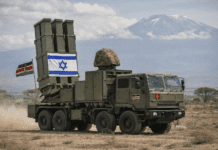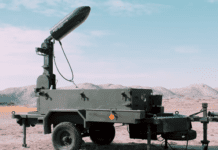This post is also available in:
 עברית (Hebrew)
עברית (Hebrew)
For many years, US Army weapons officials have been trying to give soldiers the ability to shoot around corners. Now, the Army is equipping infantrymen with a sophisticated sighting system that allows them to accurately shoot around corners without exposing themselves to enemy fire. However, this futuristic capability, some say, may come at the cost of proficiency and could even result in more friendly-fire casualties.
The Enhanced Night Vision Goggle-Binocular delivers a capability that increases both finding and shooting the target by using a technology known as Rapid Target Acquisition (RTA). Soldiers can see their weapon sight reticle wirelessly transmitted from a new thermal sight on the M4A1 carbine into their thermally enhanced night vision goggles, allowing them to see and quickly shoot enemy targets — day or night, from the hip or lying behind cover.
Army officials promise the RTA technology has performed well in soldier testing. But military experts warn that if the service isn’t careful, it could lead to an overreliance on technology, degrading critical marksmanship skills over time and increasing the risks of fratricide that come with ambiguity in thermal-spectrum detection, according to military.com.
Last September, the Army conducted a small fielding of the FWS-I and ENVG-B, along with other equipment at Fort Riley, Kansas, demonstrating a dramatic improvement in marksmanship when National Guard troops first shot with current optics and then used the Rapid Target Acquisition technology.
However, in a real combat situation, the soldier using this technology will be “swinging the weapon around in a non-intuitive manner … until something that is hot zigzags across the field of view. And then he zigs the gun back, finds the heated thing, stabilizes the gun enough to break a single shot and then shoots the target,” says a former SOF soldier. “So, everything that we teach them about daytime marksmanship, other than trigger control, is thrown out of the window.”
The military has to guard against becoming overconfident in technology and continue to train on proven marksmanship techniques, says Dakota Wood, a senior research fellow for Defense Programs at The Heritage Foundation.

























